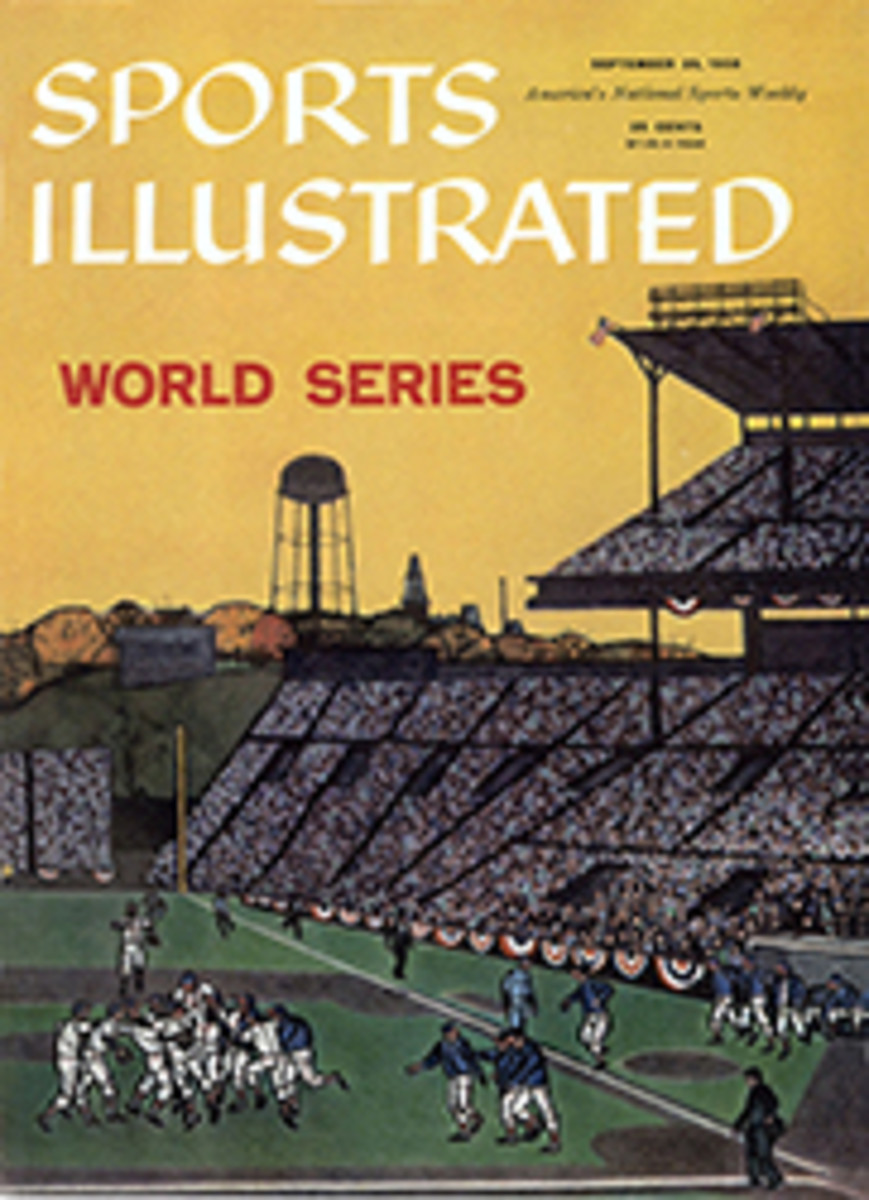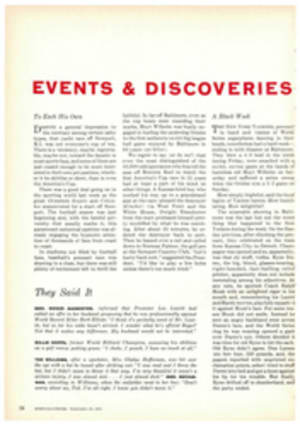
An unhappy debut
Meadowdale raceways, the newest U.S. road-racing course, was opened last week on a day bringing strong and dust-laden gusts of wind. Hastily gouged from 235 rolling acres near Elgin, Ill., the course proved to be one of the nation's most difficult. One driver was killed; another was severely injured; some 10 others were shaken up as their cars flipped off the course. The course was enough of a challenge without the added dangers which, besides the blinding dust eddies, included four adults on an overhead bridge who amused themselves by dropping pebbles on the cars racing beneath. Grumbled one Ferrari driver after his race: "Full right. Full left. I'm a wreck. I can hardly lift my arms."
The test was too much for one young driver, Robert Walker of Little Rock. He misjudged the braking of his 2-liter Ferrari at a turn, flipped and suffered a fatal skull fracture.
The course is 3.3 miles long—a series of ups and downs, twists and turns. "It's just dangerous enough to be interesting," said Driver Ernie Erickson after winning a race for smaller cars with his Porsche Spyder. "It's like piloting a boat on the Inland Waterway in a fog. You're out there looking for the buoys."
From the start-finish line the course stretches more than 4,000 feet to the first turn, downhill and to the right. After this sweeping 200° bend come an S bend, an uphill straight and another hairpin, leading to another short straight. Following are a gentle right turn, a left and then a sweeping right into a long straight through a valley and up over a hill (where some of the bigger cars become airborne). This straight blends into a tight hairpin leading into the steep (45°) banking of the so-called Monza curve, which is patterned after the famous banking at Monza, Italy. Then comes the homestretch to the finish line.
This ambitious raceway is largely the creation of Leonard W. Besinger, a rugged 51-year-old builder of suburban homes. He was never more than mildly interested in auto racing until a son, Leonard Jr., now 24, talked him into buying an MG. "We had a gravel pit here," Besinger recalls. "We smoothed it out into a little track and we used to race around it."
Next Besinger visited the road course at Elkhart Lake, Wis. "The man said, '$6, please,' and I said, 'For what?' He said, 'For two tickets.' There were 25,000 or 30,000 people there, and I thought to myself, 'This is a pretty good go.' "
Last winter, while building a model home in Chicago's Merchandise Mart, Besinger met Ed Pazdur, publicity director for the Mart. An Austin-Healey driver, Pazdur convinced Besinger that the Chicago area needed a road-racing course.
"I said to myself, 'I think I can shoot craps and build this place. I'll take a chance.' We worked day and night for 103 days. I wore out two Cadillacs bouncing around on this job. The Monza wall had to be packed by hand at the top because there isn't any machinery made to do the job. We put all the spectator areas above track level; that makes it safe for spectators. We made wide turns and gave the course a good surface to make it safe for the drivers."
Later on, when it became apparent that the course was not so safe for the drivers, Besinger promised to make any changes necessary. He was in tears and physically sick over the news of Walker's death.
Some of Walker's colleagues, however, found a lesson that had nothing to do with the course itself. "When I started driving," said one competitor, "all we had to start with were the MGs. We learned to drive them well before we got into the hot stuff. It was hard to find a big car even if you had the money. Today almost anybody can buy anything if he has the money, no matter how good or bad he is."
One result has been that SCCA officials in the Chicago region decided to meet immediately to discuss entrance qualifications at Meadowdale.
Plagued by clouds of dust swirling up from the raw spaces at trackside, the very large crowd (officially announced as "more than 151,000," an unbelievably high figure), nevertheless found something to cheer about as American-built cars swept the first two places in the 115.5-mile feature race. These were the sleek Corvetteengined Scarabs commissioned by Lance Reventlow, 22-year-old son of Heiress Barbara Hutton.
NATION'S SECOND BEST
Reventlow drove one of them; California's Chuck Daigh, who had an important hand in their building, the other. Daigh led for 12 laps with Reventlow close behind, then Reventlow moved ahead and stayed there for 13 laps, his car functioning perfectly despite some front-end damage from an accident in an earlier race. Daigh once again took the lead and kept it for the remaining 10 laps, achieving a fastest lap of 87.9 mph. As the ultra-streamlined racers swept out of the Monza turn toward the finish, Daigh tapped his brakes, presumably to let Reventlow through, but Reventlow was a little too far behind to capitalize on his gesture.
Daigh, one of the nation's most experienced drivers, pronounced the course a good one. "Next to Riverside [a testing California course] it's the best in the country," Daigh said. "The banking in the Monza turn is rough, though. I had to shift down to third gear—took it at about 125 mph."
Reventlow, reflecting that the Scarabs had lapped all but two opponents in the feature race, that the cars have been able to challenge the most powerful foreign sports racers successfully in the few weeks they have been campaigned, and that he has been hailed as a worthy successor to Sportsman Briggs Cunningham in building topflight, homebred sports cars, looked happily ahead.
"We're getting a third car ready," he said, "and our next goal will be to finish one-two-three in a big race somewhere."

